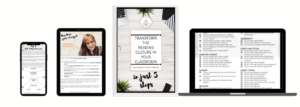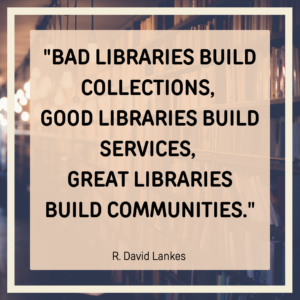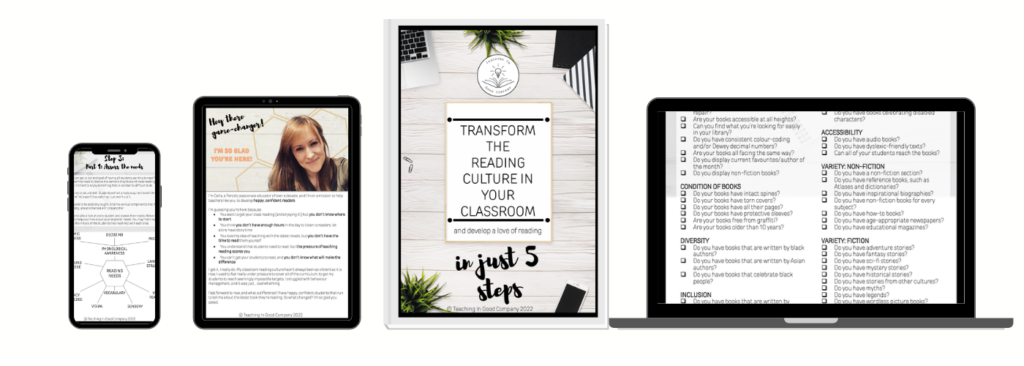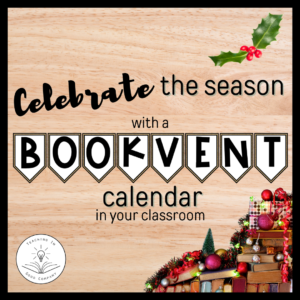“Reading is boring!” most of the children would say.
I didn’t get it. I just couldn’t understand. I LOVED reading. I was a teacher who loved reading. An experienced teacher, no less. But only a handful of my students shared my love of reading.
I was dumbstruck. How could it possibly be? How had my love of reading not rubbed off on them?
There I was, with a beautiful classroom equipped with the school library IN the room! And yet, no matter how many ‘tips’ and ‘tricks’ I tried (and I really did try all the tips and tricks!), I did not have the reading community I so longed for.
And then one day, I saw it. I’d been approaching it all wrong. It was time for a new approach. No longer focused on what I wanted, I turned my attention to what the children needed. I did the research and finally understood where I’d been going wrong. I put forward every effort to overhaul my whole reading ethos. It was time to turn over a new leaf (cheesy pun intended!)
And it worked! I went from having a class of children who boldly bragged about hating reading, to a class full of children desperate to talk to me about their reading book and begging for another page of the story during story time.
Today, I’m going to share with you my journey; about how I transformed the reading culture in my classroom- starting with the library.
WHAT IS A READING COMMUNITY?
Before we start, I should probably clarify exactly what I mean when I say I built a reading community in my classroom. My definition of a reading community is a collective of people who share a love of reading. In an ideal world, we want all classrooms to be vibrant reading communities: places where children run at the opportunity to talk about their books, enjoy reading and want to spend time in the worlds in between the pages of their beloved books.
And I did it!

After a bumpy start of testing out so-called ‘strategies’ (another post on that soon!) my journey started like a game of Cluedo with a teacher, in the library, with a book.
WHY DID IT TAKE ME SO LONG TO BUILD A READING COMMUNITY?
I wanted to build a reading community and nurture a lifelong love of reading, so I started by taking a long hard look at my environment and practice. And it wasn’t exactly hard to see why my reading culture wasn’t exactly thriving. Looking back now, I wish I had scrutinised the learning environment sooner.
Here’s a little background insight into the classroom before I transformed it: I found myself the perfect part-time teaching job in a small, rural primary school. It was so idyllic. I’m talking Victorian nursery rhyme-style primary school. The classroom was rectangular and pretty spacious, with large windows, a high vaulted ceiling like a church and open plan into the school library.
Dreamy, right? I had the school library at the base of my classroom! But, the job was only temporary- covering a well-established teacher’s maternity leave, so I didn’t want to change anything or upset the environment she had created, because I was secretly hoping she’d want to return part-time and I could secure myself a permanent position at the school.
Plot-spoiler! She decided not to return, and miraculously a full-time, permanent position became mine!
But planning and teaching for four year groups was tough with a capital t. Tough. I wasn’t taught how to plan and teach for multiple year groups at university and my teaching experience up to this point only extended as far as two year groups in one class… four. Wow! It was a lot, and hours of my time was spent researching case studies, taking part in research studies and reflecting. Each term, I was moving around tables, trying out different timetables and carousels and it left very little time for my passion: reading.
THE MOMENT I REALISED I NEEDED A DIFFERENT APPROACH
Then one morning, whilst listening to readers, a student asked me to help them find their next book in the reading scheme (*shudders at the memory of colour coded reading schemes) and I went into the library.
That was the moment, folks. The moment I saw it. Chaos. No wonder they couldn’t find the next orange book! My colour-coded book bins had been put back on the shelves in the wrong order, books were stuffed in the wrong coloured bins, there were books spine-facing inwards, and shelves sagging under the weight of thousands of tatty books. There were books everywhere!

You might be thinking, that having lots of books would be a good thing. And, listen, I LOVE books. But there were just too many. It was overwhelming. And simply, there were just too many books to fit on the shelves.
UPDATING MY CLASSROOM LIBRARY: THE CLEAR OUT
I realised, I didn’t actually know what was in my library. There wasn’t an inventory anywhere, we were a small primary school with no library management software or system. I needed to know exactly what was in my library. How could I possibly recommend books to children, if I didn’t know what was there? It was time for a clear out.
So I started grabbing boxes and worked systematically, one shelf at a time. I was ruthless. I cleared out all the books that were too tatty, too old and too out-dated. And the ones I wasn’t sure of? I enlisted the help of my students! Utilising 3 tables, we had a ‘loved it’ table, ‘interested’ table and a ‘would not read’ table. The rules were simple, you could upgrade a book, but not downgrade it. After all, if someone was interested in a book, or loved it, it was worth keeping.
All-in-all, I cleared out over 1,000 books.

UPDATING MY CLASSROOM LIBRARY: THE INVENTORY
Afterwards, the shelves were a little bare, but this helped me to do something crucial: make an inventory. I needed to know what we had, and vitally, what we didn’t.
We had no money available to purchase an electronic library software system, but I did manage to find an app for about £6 that enabled me to scan the books ISBN number on an iPad, giving me each book’s lexile level and the ability to assign it to different virtual class libraries within the app. This was a starting point: once catalogued, there would be a record of all the books in the school library, which could be added to.
Diligently, I scanned each book and based on lexile levels, put it on a year group shelf. I absolutely would not do this now as I think there are better ways, but at the time I really wanted to help the children to find age-appropriate books (a spooky story for a year 6 child can look very different from a spooky story for a year 3 child).

UPDATING MY CLASSROOM LIBRARY: THE IMPORTANCE OF BOOKSHELVES
Oh the shelves! How had I never realised that these were just not fit for purpose? These were bookshelves bought only five years or so before I arrived at the school, and you probably have them in your school too: these are ones available in every school furniture catalogue! At first glance, they look lovely! A light beech-coloured mdf shelving unit with smart blue edging. What’s not to love? A lot, as it happens.
Firstly, the shelves were made of mdf with only small pins holding them in place. After years under the weight of our books, the pins had started to wear away at the shelves causing them to disintegrate and balance precariously. They were all one book away from collapsing. And collapse, they did.
Secondly, the units were too deep! Far too deep! When novels were placed against the back of the shelving units, they couldn’t be seen easily by the browser.
But, back in the school cupboards, there were the PERFECT bookshelves. These were old and a little dusty, but solid-wood, the perfect student-height and shallow in depth. I dragged them out, cleaned them up and ‘hey presto!’ I had most of the shelving I needed.
A quick scout on Facebook marketplace later, and I came across this gorgeous unit for FREE (below). Eagerly, I drove the ten minutes away, folded down the seats of my car and collected it.

Once the shelves were in, I played around with the arrangement until I was happy. I settled on creating two horseshoe-shaped nooks, rather than a straight wall, as I wanted it to feel cosy and to have two distinct areas: one for non-fiction and one for fiction and poetry. Inside the non-fiction section, we placed an enormous bean bag; and inside the fiction section, a small round table with a couple of chairs.
UPDATING MY CLASSROOM LIBRARY: LIGHTING
In my vision for the perfect library, I imagined a Gryffindor common-room style. I wanted it to be in-keeping with the age and style of the building, feel warm and cosy, and be a space that the children and visitors wanted to explore. The overhead artificial lighting strips were not creating the impact I wanted. What we needed was soft, ambient lighting. With the room already benefitting from tall windows, gently shaded by a weeping birch tree outside, the lighting was often dappled, so all we needed was a little lift… something warm.
The moment the fairy lights were draped across to frame each bookshelf, the space became magical. Keeping them static, to avoid sensory overload, the lights seemed to beckon us into the space. Soon the children were asking regularly if they could spend time in the library, work in the library, read to a partner in the library and have story time in the library.
But my work was not done yet.
UPDATING MY CLASSROOM LIBRARY: NEW BOOKS!
Getting rid of just over a thousand books and cataloguing what we had, left a gaping hole. One glance across a bookshelf and it was clear: this library had not been updated in over 20 years! Where were the modern-fiction books? The black authors? What about LGTBQ+ books? Or books celebrating diversity? Any representations of disability?
Oh! And one step into the non-fiction section and it was clear to see that we needed atlases with current countries!
It was time to create a wishlist.
I created an account with Bookshop and compiled a wishlist to support independent booksellers. I went big.
Nervously, I submitted the wishlist to the admin team. I knew full-well we wouldn’t be able to afford all the books, but I took them the list of what we were missing and what our library and students so desperately wanted.
To my surprise, having seen the lengths I had gone to to update the library, the admin team had furiously been searching and applying for grants to improve our library. And they had managed to secure one. We had £500 from a grant and the PTA had matched it! £1000!
My wishlist was quite a bit over the £1000 mark, but after a little trimming I narrowed it down, leaving the remaining titles on a wishlist for future years. And then we waited for them to arrive…
BUILDING A READING COMMUNITY: THE POWER OF CHOICE
The day the books arrived there was a buzz like nothing else. It was like Christmas. Every child, and I do mean every child, volunteered to help with the unpacking and stamping of the new books. Once catalogued, we invited the children to explore them: one full afternoon of looking, sharing and reading the new books.
It was magical. Quite possibly, the best day in my teaching career to date.
The air was effervescent! The children poured over the books, admiring the beautiful covers, reading the blurbs and making waiting lists for various books.
I found children underneath tables, squirrelled into nooks by cupboards and lounging on bean bags, all fully absorbed in their new books. A child who at the start of the year had declared, “I hate reading!” had squished himself next to a radiator behind a table and was reading, The Land of Roar, aloud to himself. Completely absorbed in the story, he was oblivious to the world around him.

The air in the room had changed. The environment had changed. The attitude had changed.
And this was just the start of the transformation.
In my next post, I’ll share more on my class library organization.
But for now, I’ll leave you with this thought: Do YOU know exactly what’s lurking on the bookshelves in your classroom?

If you haven’t downloaded it already, my FREE guide takes you through 5 steps to transform the reading culture in your classroom and help your students develop a love of reading.







